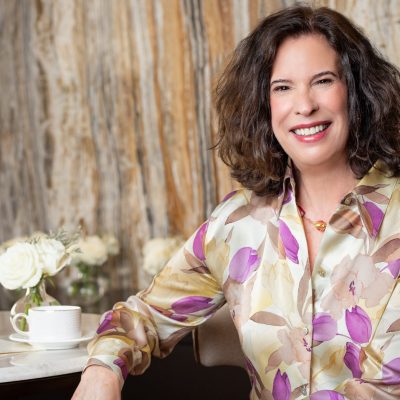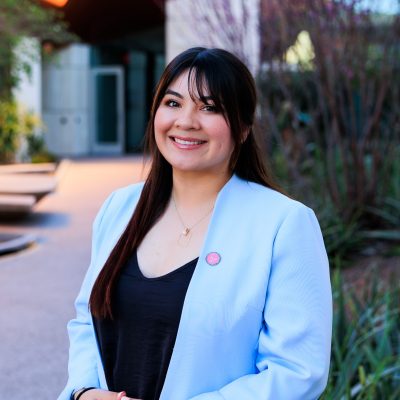Journey to the Land of Khan and Back
In September 2012, 12 Arizona residents, all members of The Nature Conservancy, flew into the coldest capital city in the world, Ulaanbaatar, Mongolia. Their two-week trip was by invitation from the country’s president and part of an exchange of information between TNC and Mongolian government officials.
Often referred to as Outer Mongolia, the modern sovereign state of Mongolia is situated in east and central Asia. Russia lies to the north and China to the south, east and west. Mongolia is one of the largest countries in the world geographically – approximately six times the size of Arizona – but it is also the most sparsely populated, with just 2.6 million people.

While Ulaanbaatar, the capital city, looks modern, it has grown so quickly that its infrastructure hasn't kept up. Hence, the streets are crowded, there is not the expected electric grid and the coal used for heating can't keep up with the needs.
It is the land of Genghis Khan, the founder and emperor of the Mongol Empire. But that was in the year 1206. Since 1992, after intervening centuries of influence from the Chinese, Tibetan Buddhism, Russians and Soviet, Mongolia has been a democracy.
Like Arizona, the country has three main ecosystems – mountains, grasslands and desert. The grasslands are home to sheep, goats, cows, horses and camels, tended by nomadic herders. They are free to roam the government-owned land with their animals because there are no fences.
Overseeing the fastest-growing economy in the world, Mongolian government officials are seeking to preserve their herding way of life, while at the same time manage their vast copper, coal and gold resources. Their opportunity to mine these resources provides an optimistic future but still comes with risks. Neighboring countries would also like to tap into these underground riches.
Steve “Mac” MacLellan, who as president and CEO of Northern Trust, Central Region now splits his time between the Valley and Chicago, was one of the travelers. He points out that while the country with its high literacy rate – 96 percent – is poised for tremendous economic growth, it also lacks the infrastructure – roads, hotels, electric grids and more – to handle the growth with ease.
The exchange of information makes sense to MacLellan. “Arizona did some things right,” he says, “but we also did some things wrong. Mongolia can learn from that.”
“We didn’t go to tell them what to do. We want to help create conditions that will help the Mongolians create a future that is prosperous for them,” says Pat Graham, TNC state director in Arizona since 2001.
The travelers
In addition to MacLellan and his wife, Miriam, the Arizona travelers included Ginger and John Giovale of Flagstaff, and Valley residents Jacquie and Bennett Dorrance, Stephania and Bruce Williams, Gail and Pat Graham, and Panol and Janaki Ram.
Ginger Giovale, president of TNC Phoenix chapter, says, “It’s important to us as a board to get out to different places in the world. The mission of TNC worldwide is to help make a difference in conserving wildlife, resources.”
The grasslands
The group began their journey in the northern grasslands by meeting with the newly appointed (Aug. 2012) Minister for Nature, Environment and Green Development Sanjaasuren Oyun. Her belief – and the Mongolian government’s – is that the next 20 years are critical in determining whether they get it right or wrong, whether they flourish and are able to hold onto their diverse cultural heritage or become victims to the corruption that often hovers around riches.

The blue sashes worn by the Arizona travelers were given to them as part of their welcome. The minister for Nature, Environment and Green Development is seated in the middle on the right.
The herding families in the grasslands live in gers. The ger, which we might refer to as a yurt, is a bent wood-framed structure covered by layers of fabric and especially felt, made from sheep’s wool. The design makes the ger portable so it can be disassembled and rebuilt on another site as the herders move to fresh grasslands.
The first evening, the Mongolian hosts served a buffet-style meal of rice, meat and vegetables. Though the travelers’ accommodations were tents, they visited two different gers in a herders’ camp. There they experienced warm milk tea as well as fermented mare’s milk. “I felt, and I think the whole group, felt so welcome, says Giovale. “They invited us into their homes and served a meal.”

The ger on the left is where the hosts prepared the meal; the ger on the right is where they served the meal.

This father and son live in one of the gers the TNC travelers visited.

Dried cheese curd and fried bread served in a local herder’s Ger

Miriam and Mac MacLellan looked for the herds of gazelles as they tried to get a sense of the place they were trying to protect.
Both Graham and Giovale point out that the Mongolian people are very spiritual. “You practice your religion outdoors,” says Graham. The Mongolians sense their connection to nature and appreciate it. Throughout the country, they have built towers, places where they go to perform rituals to seek good fortune or give thanks for a blessing. In this land of the eternal blue sky, blue is an important color in the country.

Towers such as these appear frequently around the countryside. They are a place to give thanks or ask a blessing.

Archery is one of three national sports, along with wrestling and horseracing. Here, Jacquie Dorrance hones her skills under the guidance of a pro.
HUSTAI Nature Reserve
After two evenings in the grasslands, they traveled to HUSTAI Nature Reserve, located in northeastern Mongolia. The area serves as a transition zone between the grassland and forest steppe ecosystems. Here, the group stayed in gers.

This ger, where the women travelers stayed, is both comfortable and colorful.

Janaki and Panol Ram stand in front of a herd of Bectrian camel. Notice the two humps.

HUSTAI is home to about 400 takhi, the last remaining species of the original wild horse.

In the buffer zone around HUSTAI, the group was introduced to Kumis, or fermented mare's milk.
The Gobi
The third phase of their journey took them to the Gobi to the south. (The name Gobi Desert is a misnomer, since Gobi actually is a Mongol term for desert steppe.) During this phase of their trip, they stayed in the Three Camel Lodge, rated as one of the top 50 Eco-tourism ledges in the world.

Mac and Miriam MacLellan in front of Three Camel Lodge
Though it “never rains in the Gobi,” while they were there it rained much of the time. So they visited a school, where the children sang for them. An elementary school teacher, Gail Graham had brought postcards made by her class in Arizona, and they passed them out to the children.

Children ready for their daily lessons
Remarkably, this remote little school is home to a nationally recognized volleyball team. The Arizona travelers took note of the water that flooded the gym and are investigating the cost of fixing the roof of the 50-60 year-old school, which was built during the Russian era.

Fresh vegetables were rare in the grasslands. This woman in the buffer zone around HUSTAI did grow vegetables, possibly some served to the group.

During their time in Gobi, the group saw the Flaming Cliffs – or Bayanzag. Many fossils have been found here, and the area is famous as the location where the first dinosaur eggs were discovered.

A Gobi sunset
Gobi was the last stop of the trip, though many from the group didn’t want to leave the rugged country.

The group returns to the capital to depart for home.
The takeaways
The takeaways were many.
First, Mongolia is at a “tipping point,” says Graham, with the future unknown. The country is at a crucial point in its history, 22 years into a democracy.
Second, he notes that there is a real interest both in the government and in the people the group met to find the balance that will allow them to preserve their way of life and develop economically.
Third, the work TNC is doing in Mongolia is appreciated, according to Graham. “With a small investment,” Graham says, “we’re able to make a big impact. We can provide the tools and work with local partners and government officials. These investments have the potential to put the country on the course they’re striving to achieve.
The 12 Arizona travelers came back optimistic that they are working at the right time with the right people.
“At the end of the day, it’s about having a lifestyle to pass down to their children,” Graham adds, and in that sense, the people of Mongolia aren’t much different from people anywhere.
“When we asked one mother what her aspirations were for her children, she said, ‘I hope one is in business, one in the military and the third a grazer. But my husband and I don’t see it the same way,’ she said. ‘He says to let them figure it out.’ ’’
Text by Cindy Miller
Photos by TNC travelers






